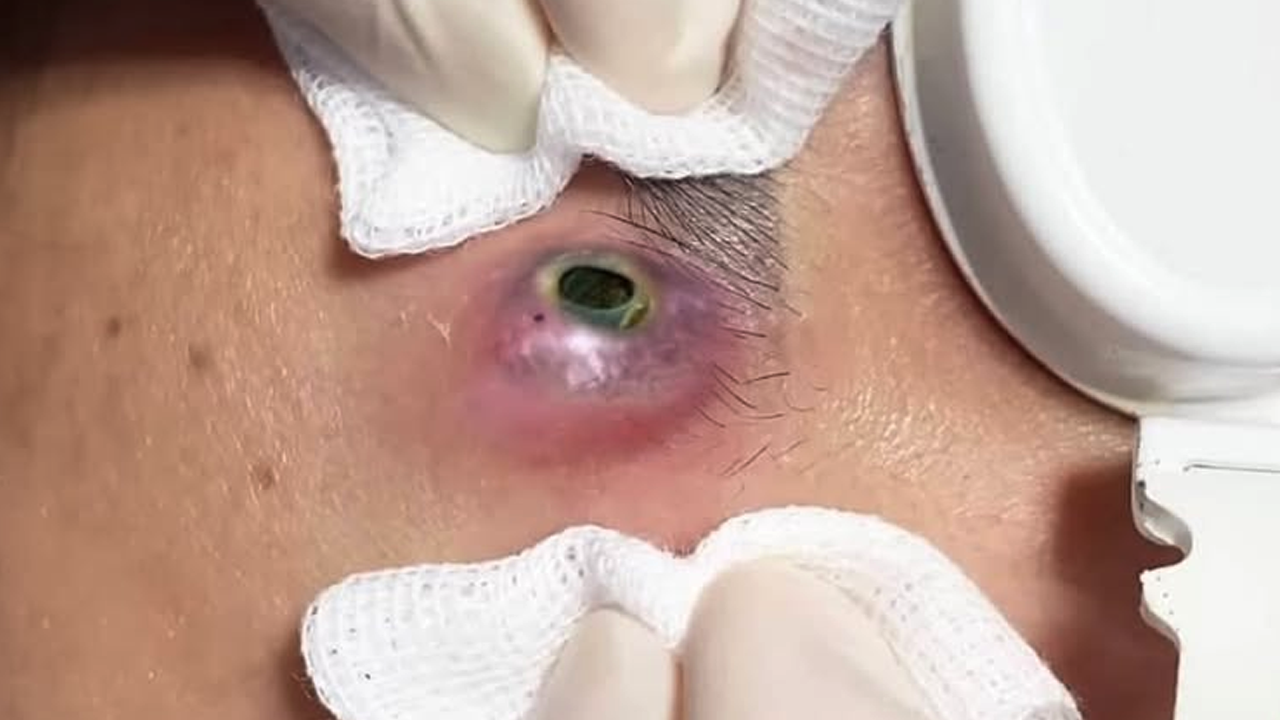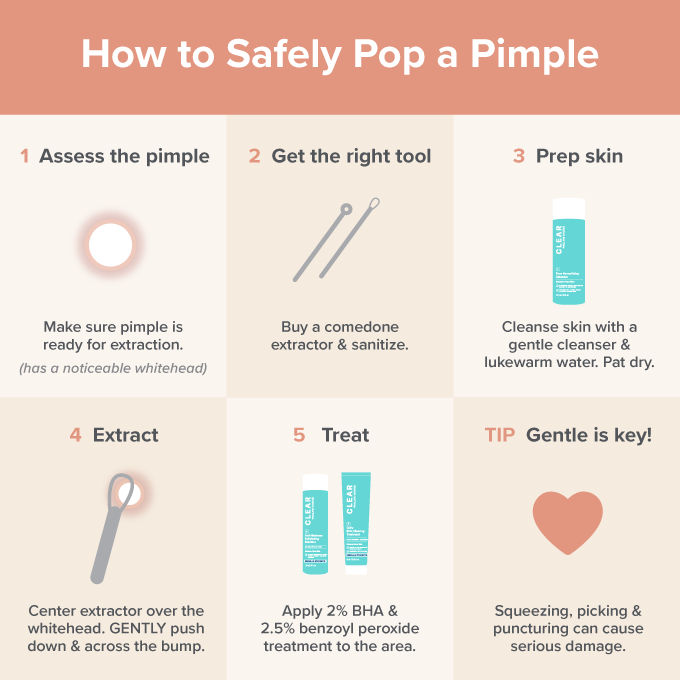Popping huge blackheads and pimples might seem satisfying (and it’s become a whole internet subgenre), but it’s not recommended to do it yourself, especially without proper technique and hygiene. Improper popping can lead to infection, scarring, and worsening of the breakout. That said, if you’re still set on doing it, here’s how to do it as safely as possible — but know that it’s always best to see a dermatologist or licensed esthetician.
⚠️ FIRST: When not to pop
-
If the pimple is deep, painful, or cystic – do not attempt to pop it.
-
If it’s not ready (no visible head or pus) – squeezing can push bacteria deeper.
-
If you don’t have clean tools or hands.
✅ Safe Popping Technique (for blackheads or whiteheads only)
You’ll need:
-
Warm water
-
Mild cleanser
-
Clean tissue or cotton pads
-
Alcohol wipes or rubbing alcohol
-
Comedone extractor (optional)
-
Gloves or washed hands
-
Salicylic acid or benzoyl peroxide for aftercare
Step-by-step:
-
Cleanse your face with warm water and gentle cleanser.
-
Steam your face for 5–10 minutes to open pores (optional but helpful).
-
Sanitize your hands, nails, and tools with alcohol.
-
If using fingers, wrap them in clean tissue to avoid bacteria transfer.
-
Gently apply even pressure around the pimple or blackhead. Don’t dig or force.
-
For blackheads, a comedone extractor can help – press gently around the pore.
-
If nothing comes out easily, stop. Forcing it will cause damage.
-
-
Clean the area afterward with an antiseptic or toner.
-
Apply a spot treatment (salicylic acid, benzoyl peroxide, or clay mask).
-
Avoid touching or picking the area afterward.
👩⚕️ When to See a Pro
-
You have recurrent or painful acne, cysts, or large blackheads.
-
You’re prone to scarring or dark spots.
-
You want a cleaner, safer extraction (e.g. with tools like high-frequency wands, dermaplaning, etc.).
Final Tip:
Watch popping videos if you’re tempted — don’t recreate them unless you’re being very careful. And remember, skincare > squeezing long-term.
Popping pimples and blackheads at home is generally discouraged by dermatologists due to the potential risks, including scarring, infection, and worsening of acne. However, if you feel compelled to proceed, it’s crucial to follow safe practices to minimize harm.
⚠️ Risks of Popping Pimples and Blackheads
Attempting to pop pimples or blackheads can lead to:
-
Scarring: Improper extraction can damage skin tissue, leading to permanent marks.
-
Infection: Introducing bacteria from unclean hands or tools can cause infections.
-
Worsening Acne: Squeezing can push contents deeper into the skin, increasing inflammation and breakout severity.
-
Spread of Bacteria: Touching the face frequently can transfer bacteria, leading to more pimple.
Dermatologists emphasize that popping pimples can exacerbate these issues, and professional treatments are recommended for safe extraction .
✅ If You Choose to Proceed: Safer Extraction Methods
If you decide to extract a pimple or blackhead at home, follow these steps to reduce risks:
-
Cleanse Your Skin: Wash your face with a gentle cleanser to remove dirt and oil.
-
Apply a Warm Compress: Use a warm, damp cloth on the area for 5–10 minutes to open pores.
-
Sanitize Tools and Hands: Clean your hands and any tools with rubbing alcohol to prevent bacterial introduction.
-
Use a Comedone Extractor: Gently press around the blackhead or pimple using a sanitized extractor. If the contents don’t come out easily, stop to avoid skin damage.
-
Apply an Antiseptic: After extraction, apply an antibiotic ointment to prevent infection.
-
Avoid Touching the Area: Refrain from touching or picking at the area to allow proper healing.
It’s important to note that even with these precautions, home extractions carry risks, and professional consultation is advised .
🧴 Recommended Aftercare Products
To support healing and prevent further breakouts, consider using:
-
Salicylic Acid: Helps exfoliate the skin and clear pores.
-
Benzoyl Peroxide: Reduces acne-causing bacteria.
-
Hydrocolloid Patches: Promote healing and protect the area from bacteria.
These products can aid in managing acne and preventing scarring .
🩺 Professional Treatment Options
For persistent or severe acne, consult a dermatologist. Professional treatments include
-
Acne Extractions: Performed by dermatologists using sterile instruments to safely remove blackheads and pimples.
-
Corticosteroid Injections: Reduce inflammation and speed up healing of large, painful pimples.
-
Prescription Medications: Topical or oral treatments to manage acne effectively.
Seeking professional care can help prevent scarring and manage acne more effectively .
🔍 Conclusion
While the urge to pop pimples is common, it’s important to weigh the risks and consider professional alternatives. If you choose to proceed with home extraction, ensure proper hygiene and aftercare to minimize potential complications. For persistent or severe acne, consulting a dermatologist is the safest approach.




